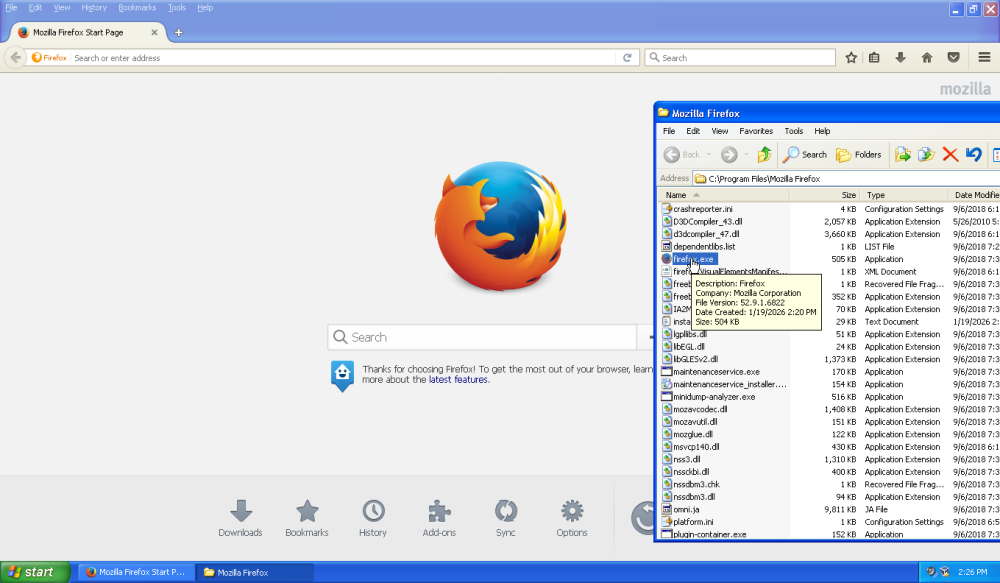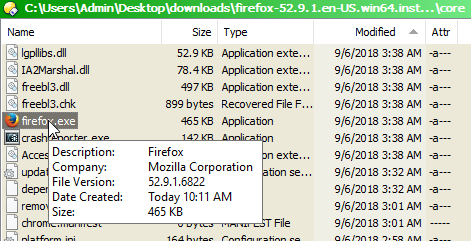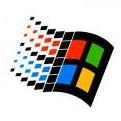All Activity
- Yesterday
-
Nearly all of the bad-eyesight folks that I know all "swear by" anything-and-everything "dark mode". Why not try a "dark theme"? ie, something like this works in Supermium in XP+POS x86 -- https://chromewebstore.google.com/detail/dark-theme-for-google-chr/annfbnbieaamhaimclajlajpijgkdblo Normal Supermium: Supermium + above-link'd Dark Theme:
-
I can vouch for this!
- 222 replies
-
- software
- Windows 8.1
-
(and 1 more)
Tagged with:
-
So, Hello after a while, and I need help. I have the DESKTOP and the LAPTOP. a year ago or so I fought hard to enable shared folder on LAPTOP to be seen from DESKTOP. I did all the registry tweaks described here: https://www.wintips.org/fix-windows-11-24h2-cannot-access-network-shares-0x80070035/ , checked all the necessary services are running, set network as trusted on both computers, enabled connection without password, turned on network discovery. Well, it worked. Then I left it off for a few month and, after a windows update and changing home router, blam, I cannot access shared folder on LAPTOP anymore. Windows cannot access LAPTOP. error 0x80070035, The network path was not found. After a few hours of trying to set it up again, I gave up. And id the opposite, namely created shared folder on DESKTOP and accessed it from LAPTOP. well, it worked. Which is a workaround, and "maybe" proofs that new router is not an issue, as devices are shown in network panel on both machines. But the whole situation makes me crazy, and I'd love my machines to work as previously. Do you have any slightest hints what might have just happened? and how to fix it? needless to say top google search is about an issue nearly 1:1 as mine, and with no answer :/ https://www.elevenforum.com/t/cannot-access-shared-folder-via-network.37320/
-
Firefox 52 no longer working on XP
NotHereToPlayGames replied to Dave-H's topic in Browsers working on Older NT-Family OSes
This is confusingly "not normal". I've never needed to use SAFE MODE to perform a NORMAL uninstall. I myself have never used Malwarebytes, so no clue what it/they consider to be "normal". I tend to think of things this way, "Can My Parents Do It?" ie, Malwarebytes would be STUPID to think somebody like my PARENTS would know how to get into SAFE MODE in order to perform an UNINSTALL. -
Firefox 52 no longer working on XP
NotHereToPlayGames replied to Dave-H's topic in Browsers working on Older NT-Family OSes
So @Dave-H, are you running an "extended kernel" ??? -
Firefox 52 no longer working on XP
schwups replied to Dave-H's topic in Browsers working on Older NT-Family OSes
CreateThreadpoolWork isn't supported by XP. It came with Vista. Programs like DependencyWalker should reveal the module (probably Vista+) you are looking for by profiling. DW also shows all module versions. -
PortableRegistrator 1.5 certainly works with XP, I don't know about any later versions. I can upload it for you if you can't get a version which works. FWIW I use the Classic Blue theme, which always looks very pleasing to me, but it may not help with your issue of course.
-

Firefox 52 no longer working on XP
Dave-H replied to Dave-H's topic in Browsers working on Older NT-Family OSes
I do have Revo installer, if you remember I used it to give AstroSkipper a list of .NET updates in another thread. I don't think I've ever actually used it to uninstall anything though! If I did, it would have been a very long time ago, so not related to this issue I'm sure. I have recently uninstalled Malwarebytes 3.5.1 though, using the normal uninstallation routine in Safe Mode. I wonder if there's any connection there? -
PortableRegistrator 1.5 certainly works with XP, I don't know about any later versions. I can upload it for you if you can't get a version which works. FWIW I use the Classic Blue theme, which always looks very pleasing to me, but it may not help with your issue of course.
-
PortableRegistrator 1.5 certainly works with XP, I don't know about any later versions. I can upload it for you if you can't get a version which works. FWIW I use the Classic Blue theme, which always looks very pleasing to me, but it may not help with your issue of course.
-
#2 is done. By setting new tab pages to Luxxle this largely covers for the fact that SM allows default search engines only if chosen from a small list. #3 remains frustrating: I cannot be the only one using SM with less than perfect vision and as far as I can tell all themes and color scheme customizations give fine gray lines and white icons on a very light background. There may be worse scemes for visibility but it's hard to think what they'd be. However I expect that as SM becomes more popular this will get fixed. Windows and virtually all of the popular Win brwosers over the years had this right: SM (or Chromium's?) new bad idea won't go without an option indefinitely. Unless, of course, I'm still missing something obvious. That could happen. #1 The software you suggest is Win 7 and later I believe. My 'modern' machine (this one) is XP. I can probably do the edits by hand but I'll wait until I'm sure everything is stable. Though come to think of it most other browsers are capable of setting themselves as the default so switching away from SM should be easy if ever needed. Supermium is tops. Thanks for the help! Back to working on Win 98 on a Dell 4600.
-
Hie @raddy, thank you for the heads up. I'll fixed it.
-
Firefox 52 no longer working on XP
NotHereToPlayGames replied to Dave-H's topic in Browsers working on Older NT-Family OSes
If I had to fathom a guess, you have used Revo to uninstall a program or two. I used to "swear by" Revo. Until using it to uninstall AVG/Avast (don't remember which, to be honest) forced a reformat/reinstall to get XP running properly again. Granted, that was DECADES ago, but the bitter and sour taste is still present. Technically, it was THAT experience that pushed me into VMs for "testing". -
raddy started following Firefox 52 no longer working on XP
-
Firefox 52 no longer working on XP
NotHereToPlayGames replied to Dave-H's topic in Browsers working on Older NT-Family OSes
Cannot replicate. Firefox 52.9.1.6822 is working for me in XP+POS (32-bit) with *NO* extended kernel (not a fan of them, technically not a fan of POSReady but been using it experimentally). This is from inside a VM. My era-correct real-hardware for an XP+POS deployment is still undergoing experimentation. -
Firefox 52 no longer working on XP
NotHereToPlayGames replied to Dave-H's topic in Browsers working on Older NT-Family OSes
Available here - https://archive.org/download/firefox52.9.1esr (x86 and x64, I only screencap'd x64 below) -
Dave-H started following Firefox 52 no longer working on XP
-

Firefox 52 no longer working on XP
Dave-H posted a topic in Browsers working on Older NT-Family OSes
I've had Firefox 52.9.1.6822 installed on the XP side of my machine for many years, as the last Firefox version which will run on XP. I don't use it often now as I use a much more up-to-date version of Supermium. However, I tried to run it today, and it won't run any more. I just get a popup saying - "The procedure entry point CreateThreadpoolWork could not be located in the dynamic link library KERNEL32.dll." Anyone any idea why it would have stopped working? I've not knowingly changed anything relevant since I last used it. The Firefox files seem to be as they have always been, and no system files have been knowingly changed either. -
And that (D3D9!) was all it took to return my water sewer bill to an infinite unsolveable Cloudflare captcha loop! Even as high as Chrome v144. D3D9 flag is working in Chrome v143. No video stutters in v143 *when using* D3D9. What a d@mn F'in Nightmare all of this Cloudflare sh#t is evolving into !!!
-
So I've now had TWO consecutive "forced updates" that both did the same exact thing on my end. That result being that Cloudflare captchas would loop endlessly and never be able to be "solved". The "are you human" checkbox would show a checkmark after solving the puzzle (only for a split second), but it would only take you to another puzzle. Endlessly. The first time was last November. The solution was a "forced update" from running Chrome v136 and manually updating to Chrome v140 (v138 technically solved, but v140 solved a different issue). The same exact thing happened yesterday. Cloudflare captchas would appear to solve but all they would do is take you to another puzzle. Manually updating from v140 to v141 solved the endless captcha loops (but presented video stutter issues that v140 did not have!). In both cases, the first sign of something happening was that Google Search would present Cloudflare captchas EACH AND EVERY TIME you visited Google Search. They would "solve" but you were presented with it EACH AND EVERY TIME you visited Google Search! In both cases, my water sewage bill would present the unsolveable endless loop! This happened EXACTLY in this manner in November. And again yesterday. Simply can not be a "coincidence". The Cloudflare captcha server-side algorithms being updated to use new coding is behind this. They (the algorithms) are getting smarter and smarter at detecting "old browsers".
-
You should probably check this https://github.com/abbodi1406/BatUtil/tree/master/OfficeUpsourcer/2007 It can create real integrated setup follow stepst and you get real FINAL Office 2007 setup.
-
When I set up my Win 7 notebook two years ago I had wanted to use TinyWall as a firewall ... it was listed as a simple firewall that worked. However, it was listed for only Windows 11 / 10 so I went with an older version of ZoneAlarm that worked with Win 7. It works good as just a firewall, no complaints. Just two days ago I discovered that there was an older TinyWall version that did work with Win 7. https://tinywall.pados.hu/ TinyWall is a lightweight, user-friendly, and secure firewall for Windows. It is also completely free. Under FAQ: The latest version of TinyWall runs on Intel- or AMD-based Windows 11 / 10. An older version, TinyWall 3.2.5, also supports Windows 8.1 / 8 / 7. Just asking if anyone is using TinyWall 3.2.5 on their Win 7 setup and if you have any comments, good or bad? Thanks ...
- Last week
-
Thank you.
-
My yt-dlp branch now shows: But this change is already applied in my own builds before the patch was officially merged.
-
I think they mean to say that Cleartype (?) hurts their eyes. It doesn't bother me tons (my eyesight, while not awful enough to mandate correction, isn't a perfect 20/20), but I can still tell when it's on, and I tend to prefer how sharp and crisp text is when it's off. Why add extra blur when I don't have to? Recent MacOS versions have it too, but it's more subtle and less annoying (I can still tell the difference when it's off, though). XP had it, too, and for some reason, it wasn't so bad (maybe due to the fact that it was fully optional and off by default). I don't recall Windows 2000 having it natively, but maybe it (or something like it) was backported, perhaps by way of an XP update? c
-
Upgrading XP Pro to Media Center Edition
justacruzr2 replied to justacruzr2's topic in Windows XP Media Center Edition
OK. Got it to work. But it also installed IE7 and WMP11. Wasn't sure if it would do that during a repair install. So I've downloaded nLite and .net framework 2.0 (only had 1 and 1.1 installed and nLite requires 2.0) so I can eliminate the installation of IE7 and WMP11. When I've created that custom XP Media Center Edition 2005 installation disk I will do this again. It really wasn't that hard and MS winPE was what really helped by allowing me to change the HKLM\System|WPA reg key by importing the WPA reg key from the clean install I did on a spare HDD. Of course there were some other modifications done as well to HKLM\Local Machine\Microsoft\Windows\CurrentVersion and HKLM\Local Machine\Microsoft\WindowsNT\CurrentVersion and copying the medctroc.inf over. Thanks to License Crawler for that.








